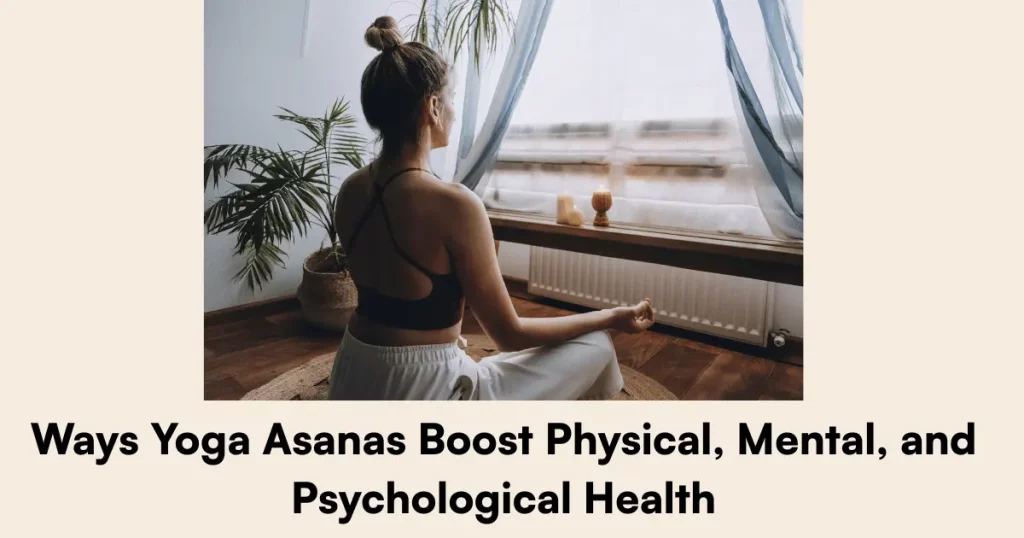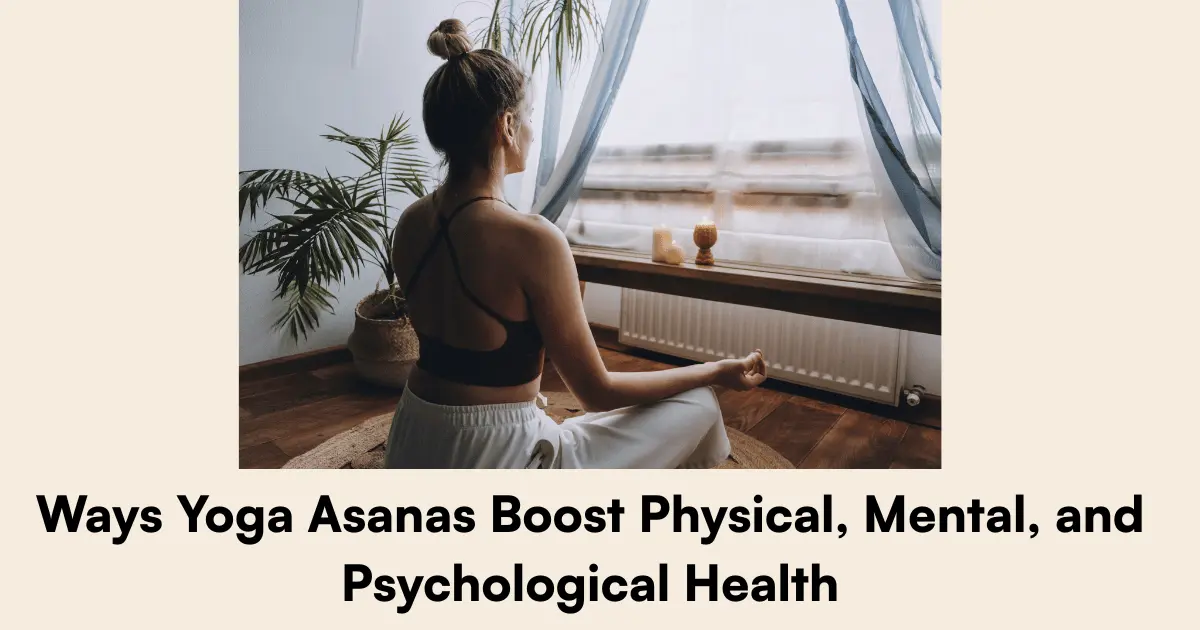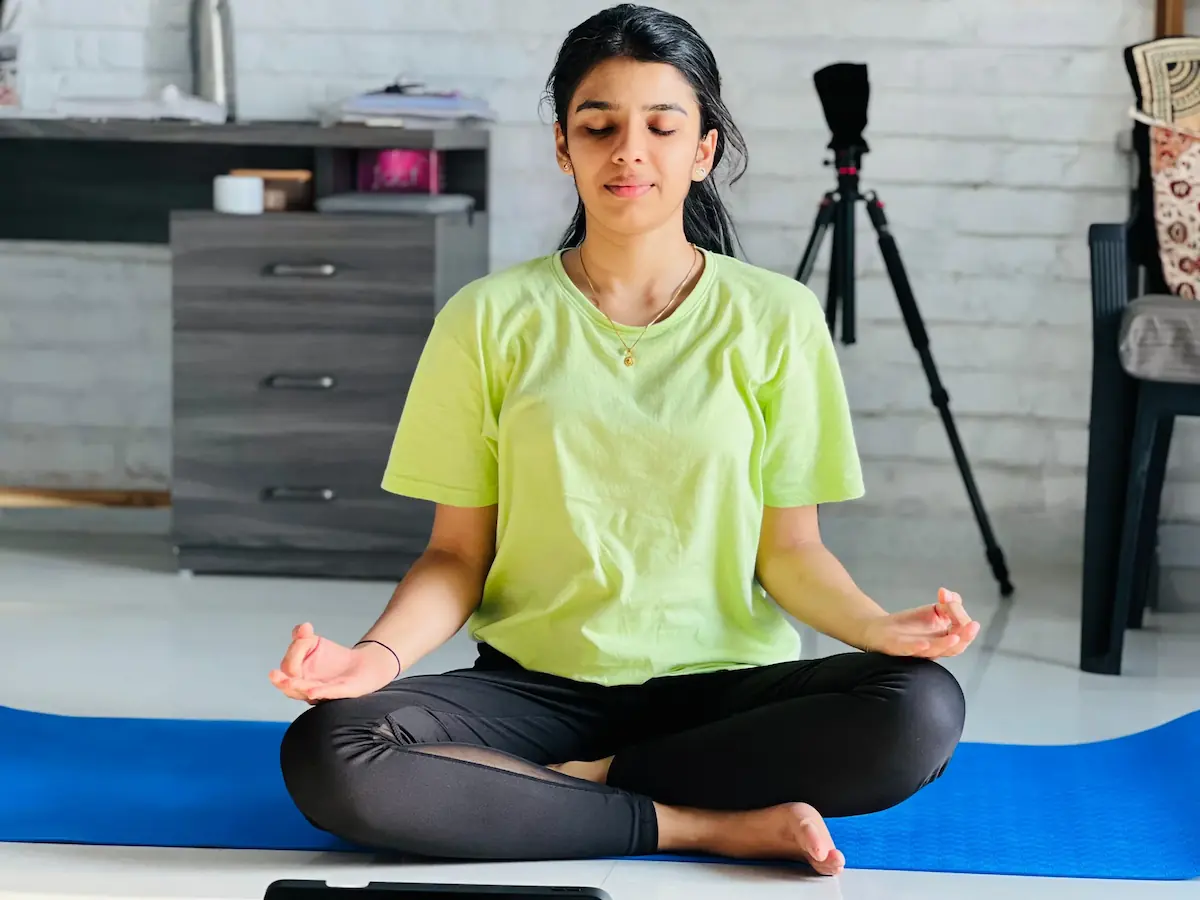Yoga asanas are more than just poses—they’re a gateway to better health on every level! Whether you’re stretching into Downward Dog or balancing in Tree Pose, these practices offer incredible yoga asanas benefits for your body, mind, and emotions. From improving flexibility to reducing anxiety, yoga has a holistic impact that can transform your daily life.
In this article, we’ll explore 9 ways yoga asanas boost physical health yoga, support yoga for mental health, and enhance psychological benefits of yoga. Ready to experience the full spectrum of yoga’s magic? Let’s dive into these transformative effects and see how a few poses can make a big difference!
New to yoga? Start with our Yoga Poses for Beginners to get comfortable with the basics.
Why Yoga Asanas Are a Holistic Practice
Yoga asanas, rooted in ancient Indian traditions, combine movement, breath, and mindfulness to create balance. A 2023 study in the International Journal of Yoga highlights that regular yoga practice improves overall well-being by 25% within 8 weeks. Physically, yoga strengthens muscles and increases flexibility. Mentally, it sharpens focus and reduces stress.
Psychologically, it fosters emotional resilience and self-awareness. This trifecta makes yoga a powerful tool for physical health yoga, yoga for mental health, and psychological benefits of yoga. Whether you’re a beginner or a seasoned yogi, these benefits are accessible to all. Curious about how yoga can work for you? Let’s break it down.
9 Ways Yoga Asanas Enhance Your Health

Here are 9 key ways yoga asanas can improve your physical, mental, and psychological health, with examples of poses to try.
Improves Flexibility and Strength (Physical)
Yoga asanas like Downward Dog and Warrior I stretch and strengthen your muscles, enhancing flexibility and power. Holding these poses engages your core, legs, and arms, building endurance over time. A 2022 Journal of Physical Therapy study found that 6 weeks of yoga increases flexibility by 20% and muscle strength by 15%. This makes daily movements—like bending or lifting—easier and reduces injury risk, a core aspect of physical health yoga.
- Try: Downward Dog—press your hands and feet into the mat, lifting hips to form an inverted V. Hold for 20–30 seconds, feeling the stretch in your hamstrings and shoulders.
Boosts Cardiovascular Health (Physical)
Poses like Chair Pose or Sun Salutations get your heart pumping, improving circulation and heart health. These dynamic movements increase blood flow, delivering oxygen to your muscles. A 2021 Circulation Research study noted that 20 minutes of daily yoga lowers blood pressure by 10% in 12 weeks. Better circulation also means less fatigue, supporting overall physical health yoga.
- Try: Chair Pose—stand with feet together, bend your knees, and lower your hips as if sitting in a chair, arms raised. Hold for 20 seconds, breathing deeply.
Improves Digestion (Physical)
Poses like Seated Forward Bend massage your abdominal organs, stimulating digestion and reducing bloating. This can ease discomfort and improve gut health, which is linked to overall wellness. A 2019 Digestive Diseases study reported a 20% reduction in digestive issues with regular yoga. Better digestion is a key part of physical health yoga, helping your body function smoothly.
- Try: Seated Forward Bend—sit with legs extended, inhale to reach arms up, exhale to fold forward, hands toward feet or floor. Hold for 20–30 seconds.
Reduces Stress and Anxiety (Mental)
Yoga asanas paired with deep breathing—like in Child’s Pose—calm your nervous system, reducing stress hormones like cortisol. A 2023 Journal of Clinical Psychology study found that 15 minutes of yoga daily cuts anxiety by 25%. This makes yoga a go-to for yoga for mental health, helping you feel more relaxed and present.
- Try: Child’s Pose—kneel, sit back on your heels, and fold forward, resting your forehead on the floor. Hold for 30–60 seconds, focusing on slow breaths.
Enhances Focus and Clarity (Mental)
Poses like Tree Pose require balance and concentration, training your mind to stay present. This mindfulness improves cognitive function and mental clarity. A 2020 Cognitive Science Review reported a 20% boost in focus after 4 weeks of yoga. Whether you’re tackling work or daily tasks, yoga for mental health sharpens your mind.
- Try: Tree Pose—stand on one leg, place the other foot on your inner thigh, and bring hands to prayer position at your chest. Hold for 20 seconds per side. Need balance tips? Check Common Mistakes Beginners Make in Yoga.
Enhances Mood (Mental)
Poses like Camel Pose open your chest, promoting feelings of joy and positivity by releasing tension. This heart-opening movement can lift your spirits and combat low moods. A 2022 Journal of Happiness Studies found that 10 minutes of yoga daily boosts mood by 15%. This mood-lifting effect is a powerful aspect of yoga for mental health, helping you feel brighter each day.
- Try: Camel Pose—kneel, place hands on your lower back, and gently arch back, pushing your chest forward. Hold for 15–20 seconds, breathing deeply.
Builds Emotional Resilience (Psychological)
Yoga asanas foster self-awareness, helping you process emotions better. Poses like Warrior II empower you, building confidence and emotional strength. A 2022 Psychology Today study noted that yoga practitioners reported a 30% increase in emotional resilience after 8 weeks. This is a key psychological benefit of yoga, helping you navigate life’s ups and downs.
- Try: Warrior II—stand with feet wide, turn right foot out, bend your knee, and extend arms to the sides. Hold for 20–30 seconds per side, feeling strong and grounded.
Improves Sleep Quality (Psychological)
Yoga asanas like Legs-Up-the-Wall Pose relax your body and mind, promoting better sleep. This pose reduces tension and calms your nervous system, preparing you for rest. A 2021 Sleep Medicine study found that 10 minutes of yoga before bed improves sleep quality by 15%. Better sleep enhances emotional balance, a vital psychological benefit of yoga.
- Try: Legs-Up-the-Wall—lie on your back near a wall, lift your legs up, resting them against the wall. Hold for 5 minutes, breathing deeply.
Fosters a Sense of Inner Peace (Psychological)
Practicing asanas like Savasana (Corpse Pose) at the end of a session helps you connect with yourself, fostering inner peace. This meditative state reduces feelings of overwhelm and promotes emotional stability. A 2023 Journal of Mindfulness study showed a 20% increase in feelings of peace among regular yoga practitioners. This deep calm is a cornerstone of the psychological benefits of yoga.
- Try: Savasana—lie on your back, arms by your sides, palms up, and close your eyes. Rest for 5 minutes, letting your body fully relax.
How to Start Your Yoga Practice
Ready to experience these yoga asanas benefits? Start with a 15-minute daily session:
- Warm-Up: Begin with Child’s Pose (1 minute) to center yourself.
- Sequence: Move through Downward Dog, Chair Pose, Seated Forward Bend, Warrior II (both sides), Tree Pose (both sides), Camel Pose, and Legs-Up-the-Wall, holding each for 15–60 seconds.
- Cool Down: End with Savasana (5 minutes) to unwind.
Use a mat ($20–$30) and practice in a quiet space. Want more variety? Explore Yoga Styles for inspiration.
Tips for Best Results
- Consistency: Practice daily to see steady improvements.
- Breath: Focus on deep, mindful breathing to enhance effects.
- Progress: Start with shorter holds, increasing as you gain confidence.
- Environment: Create a calm space with soft lighting or music.
- Mindset: Approach yoga with an open mind, embracing its holistic benefits.
Who Can Benefit from Yoga Asanas?
Yoga asanas are for everyone—beginners, athletes, or anyone seeking balance. If you have injuries, use modifications or consult a teacher. Pregnant women should check with a professional. Yoga complements various lifestyles—learn more in What Is Yoga?.
Common Challenges and Solutions
- Stiffness: Start with gentle poses like Child’s Pose; flexibility improves over time.
- Time: Even 10 minutes daily can work—try Chair Pose and Savasana.
- Distractions: Practice in a quiet space or use earbuds with calming music.
- Balance Issues: Use a wall for support in Tree Pose until you feel steady.
Real-Life Impact
Take Maya, a 28-year-old graphic designer, who felt stronger and less anxious after 6 weeks of daily Warrior II and Child’s Pose. Or Sam, a 40-year-old teacher, who slept better and felt more focused after adding Legs-Up-the-Wall to his routine. These stories show how yoga can transform your life. Have you experienced similar changes?
FAQs About Yoga Asanas and Health
How Soon Will I Notice Physical Changes?
With daily practice, you might see flexibility and strength improvements in 4–6 weeks, per studies.
Can Yoga Help with Depression?
Yes! Yoga reduces stress and boosts mood, supporting yoga for mental health benefits.
Do I Need to Be Flexible to Start?
No! Yoga meets you where you are—flexibility comes with time.
How Does Yoga Improve Psychological Health?
It fosters self-awareness and emotional resilience, key psychological benefits of yoga.
Are There Risks with Yoga Asanas?
Not if done correctly—use modifications and listen to your body.
Conclusion
Yoga asanas offer a holistic path to better health, enhancing your physical strength, mental clarity, and psychological well-being. From improving digestion to fostering inner peace, these 9 ways show how yoga can transform your life.
So, roll out your mat, try these poses, and experience the yoga asanas benefits for yourself! Which benefit are you most excited about? Share below and let’s start this journey together!

